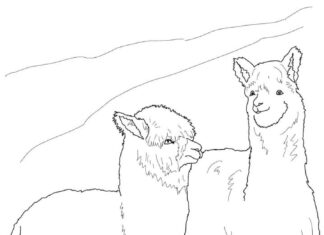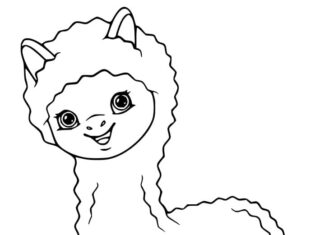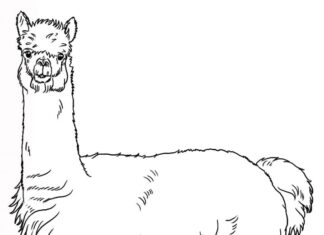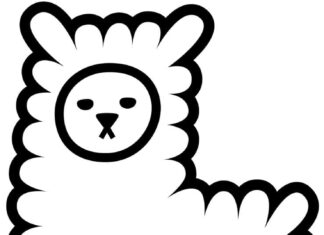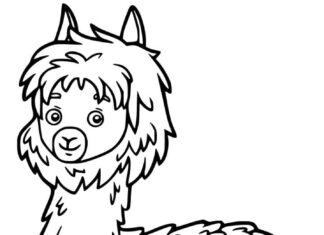Alpaca is an interesting animal belonging to the camel family, which is native to South America
Alpaca Coloring Pages
information
- Origins: Alpacas are native to the Andes Mountains in South America, mainly in what is now Peru, Bolivia, Ecuador and Chile.
- Appearance: Alpacas are smaller than llamas and have a more compact, fluffy appearance. They have a short muzzle and long, erect ears.
- Hair: One of the main reasons for breeding alpacas is their fiber, which is soft, light, warm and contains no lanolin, making it hypoallergenic. There are two main types of alpacas: the Huacaya (with curly, fluffy hair) and the Suri (with long, shiny hair).
- Color: The alpaca fiber comes in a wide range of natural colors, from white through various shades of brown and gray to black.
- Sounds: Alpacas communicate with various sounds, such as "humming" (buzzing) and warning, loud "orgle."
- Diet: They are herbivores, mainly grazing on grass. Their digestion is highly efficient, allowing them to survive in the harsh conditions of the Andes.
- Reproduction: Pregnancy in alpacas lasts about 11 months, and usually one cub, called a "cria," is born.
- Temperament: Alpacas are generally calm, quiet and curious. However, they can become aggressive if they feel threatened.
- Usability: In addition to providing fiber, in the Andes, alpacas were also traditionally raised for meat.
- Life expectancy: The average life expectancy of an alpaca is about 15-20 years.
trivia
- They don't spit as often: Although alpacas, like llamas, can spit, they do so less frequently than their larger cousins. For them, spitting is a form of defense or an expression of displeasure.
- Teeth: Male alpacas have long, sharp incisors on their lower jaw that they can use to fight other males. Breeders often trim these teeth to prevent injury.
- Care: Alpacas need regular shearing because their hair grows constantly. In warmer climates, shearing is essential to prevent the animals from overheating.
- Rich color palette: The alpaca is one of the few livestock that naturally comes in such a wide range of colors. It can come in more than 20 different shades, from black to white.
- Company: Alpacas are herd animals and feel best in the presence of other alpacas. A lonely alpaca can become stressed or depressed.
- Fiber: Alpaca fiber is not only soft, but also very insulating. It is warmer than sheep's wool and contains no lanolin, making it a great choice for allergy sufferers.
- Good for pastures: Alpacas have delicate feet with soft pads, making them less invasive to the terrain than other farm animals such as goats or sheep.
- Smart animals: Alpacas are intelligent and can be taught various commands and used in animal therapy because of their calm nature.
- Security: Traditionally in the Andes, alpacas were used to warn of predators. They are very alert and can alert the herd to danger.
- Differentiated audio messages: Alpacas communicate with different sounds, depending on the situation. They may "purr" when communicating with their young, "buzz" in stressful situations or "orglare" during courtship.

